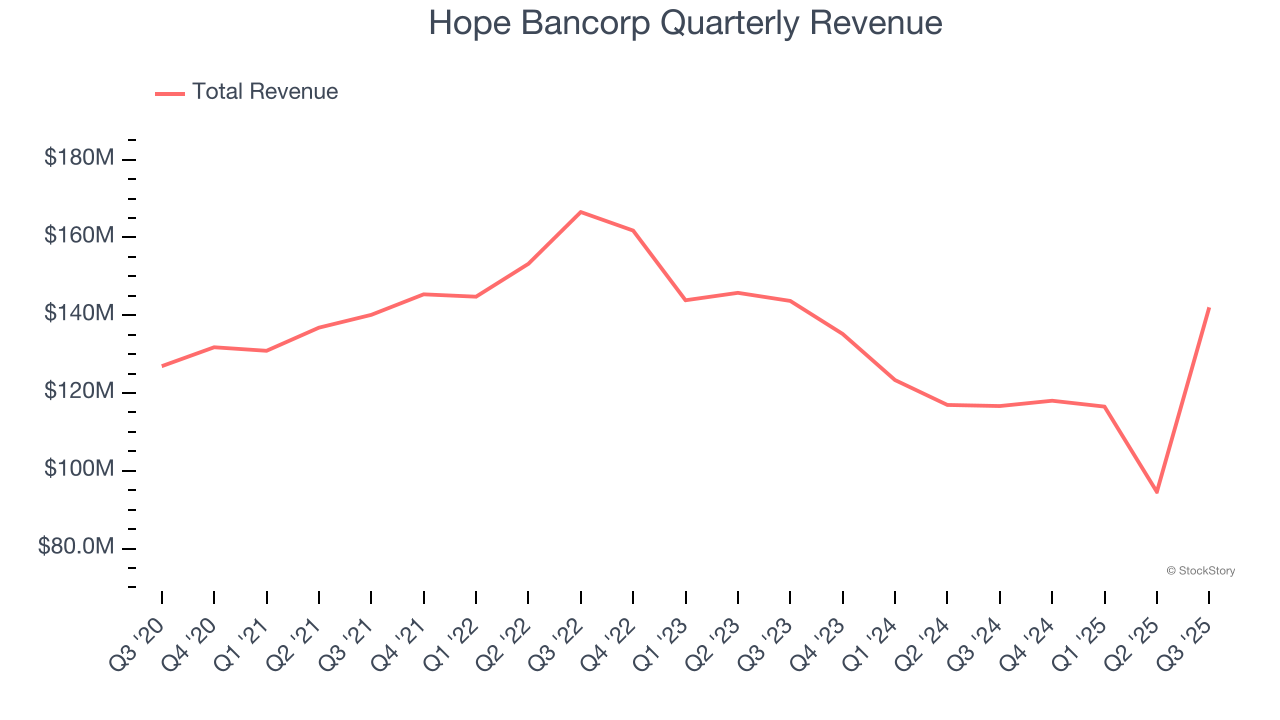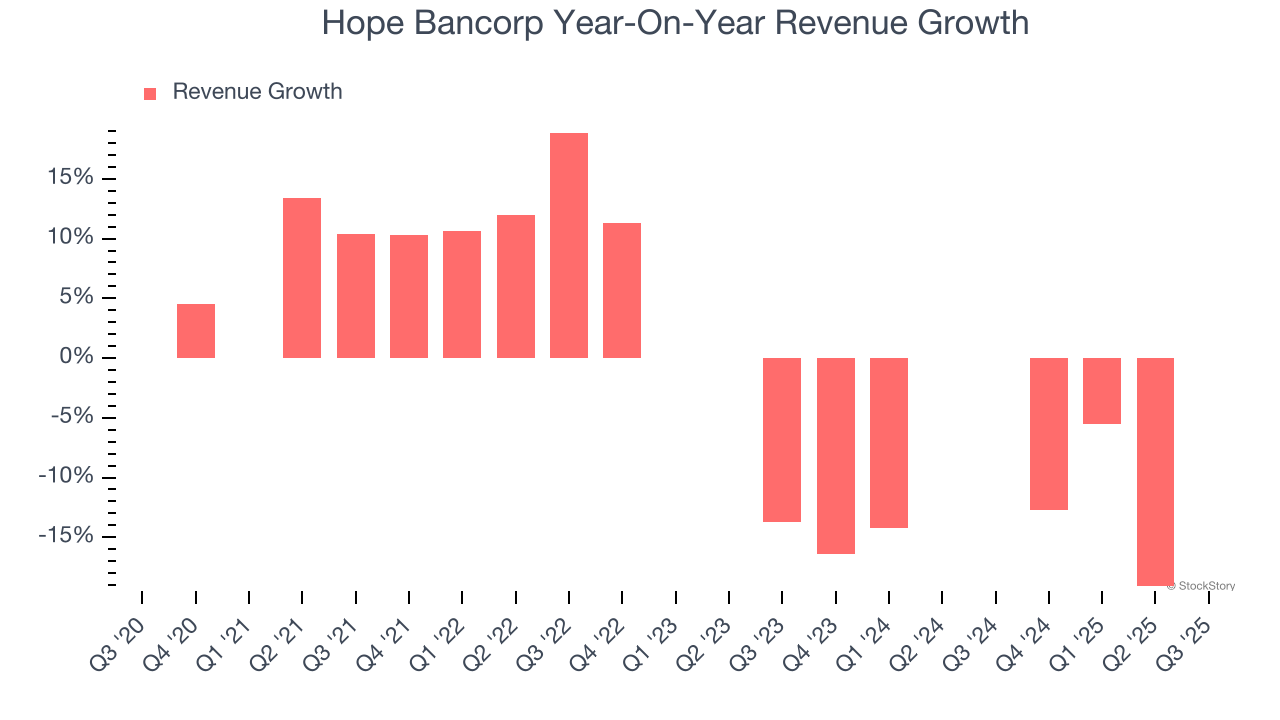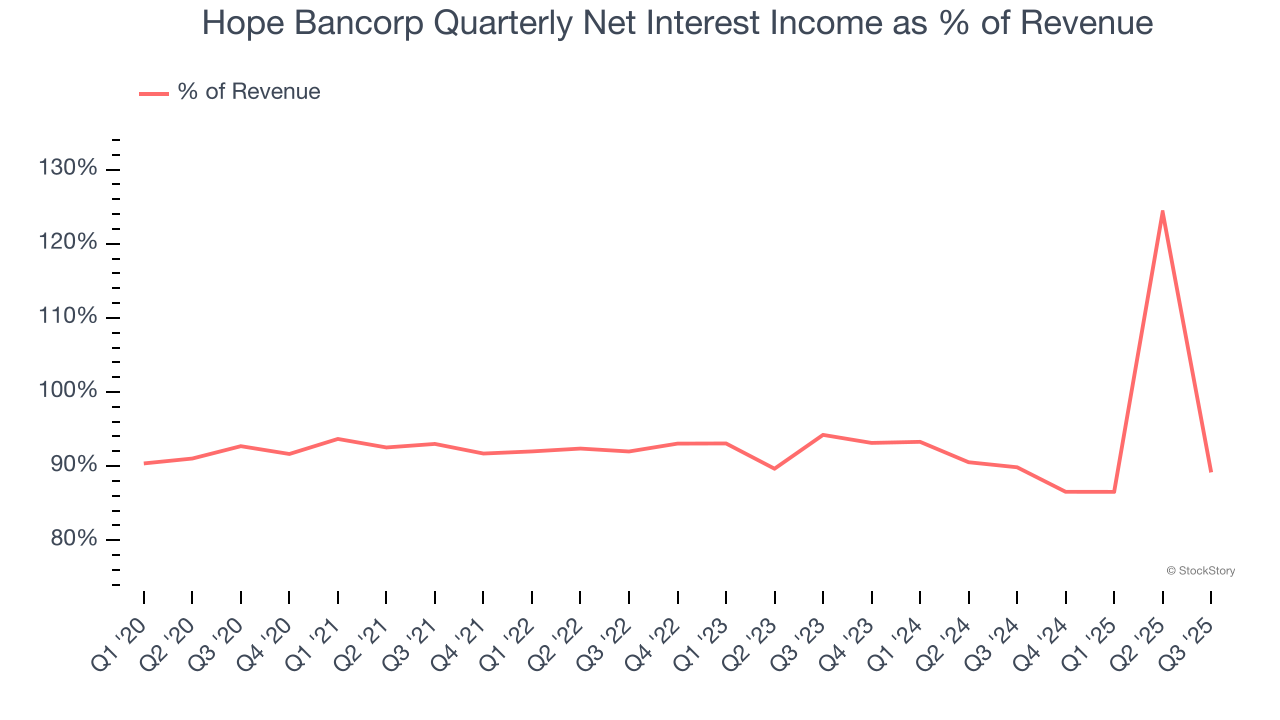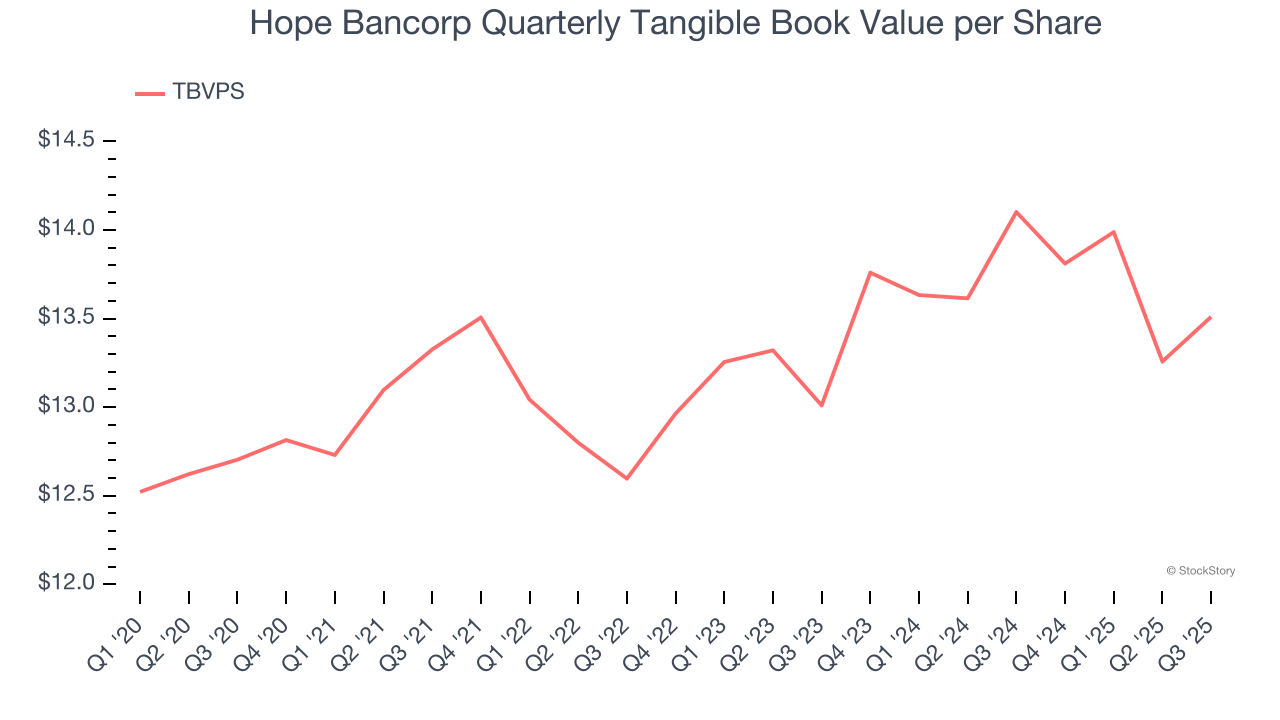
Regional banking company Hope Bancorp (NASDAQ: HOPE) reported Q3 CY2025 results topping the market’s revenue expectations, with sales up 21.8% year on year to $142 million. Its non-GAAP profit of $0.25 per share was in line with analysts’ consensus estimates.
Is now the time to buy Hope Bancorp? Find out by accessing our full research report, it’s free for active Edge members.
Hope Bancorp (HOPE) Q3 CY2025 Highlights:
- Net Interest Income: $126.6 million vs analyst estimates of $123.7 million (20.8% year-on-year growth, 2.4% beat)
- Net Interest Margin: 2.9% vs analyst estimates of 2.8% (10.3 basis point beat)
- Revenue: $142 million vs analyst estimates of $138.8 million (21.8% year-on-year growth, 2.3% beat)
- Efficiency Ratio: 68.2% vs analyst estimates of 66.3% (190.3 basis point miss)
- Adjusted EPS: $0.25 vs analyst estimates of $0.26 (in line)
- Tangible Book Value per Share: $13.51 vs analyst estimates of $13.33 (4.2% year-on-year decline, 1.3% beat)
- Market Capitalization: $1.37 billion
Company Overview
With roots in serving Korean-American communities and now expanded to a multi-ethnic clientele across 12 states, Hope Bancorp (NASDAQ: HOPE) operates Bank of Hope, providing commercial and retail banking services with a focus on serving multi-ethnic communities across the United States.
Sales Growth
In general, banks make money from two primary sources. The first is net interest income, which is interest earned on loans, mortgages, and investments in securities minus interest paid out on deposits. The second source is non-interest income, which can come from bank account, credit card, wealth management, investing banking, and trading fees. Hope Bancorp’s demand was weak over the last five years as its revenue fell at a 1.4% annual rate. This wasn’t a great result and is a sign of poor business quality.

Long-term growth is the most important, but within financials, a half-decade historical view may miss recent interest rate changes and market returns. Hope Bancorp’s recent performance shows its demand remained suppressed as its revenue has declined by 11% annually over the last two years.  Note: Quarters not shown were determined to be outliers, impacted by outsized investment gains/losses that are not indicative of the recurring fundamentals of the business.
Note: Quarters not shown were determined to be outliers, impacted by outsized investment gains/losses that are not indicative of the recurring fundamentals of the business.
This quarter, Hope Bancorp reported robust year-on-year revenue growth of 21.8%, and its $142 million of revenue topped Wall Street estimates by 2.3%.
Net interest income made up 93.1% of the company’s total revenue during the last five years, meaning Hope Bancorp lives and dies by its lending activities because non-interest income barely moves the needle.

Markets consistently prioritize net interest income growth over fee-based revenue, recognizing its superior quality and recurring nature compared to the more unpredictable non-interest income streams.
Today’s young investors won’t have read the timeless lessons in Gorilla Game: Picking Winners In High Technology because it was written more than 20 years ago when Microsoft and Apple were first establishing their supremacy. But if we apply the same principles, then enterprise software stocks leveraging their own generative AI capabilities may well be the Gorillas of the future. So, in that spirit, we are excited to present our Special Free Report on a profitable, fast-growing enterprise software stock that is already riding the automation wave and looking to catch the generative AI next.
Tangible Book Value Per Share (TBVPS)
Banks operate as balance sheet businesses, with profits generated through borrowing and lending activities. Valuations reflect this reality, emphasizing balance sheet strength and long-term book value compounding ability.
This explains why tangible book value per share (TBVPS) stands as the premier banking metric. TBVPS strips away questionable intangible assets, revealing concrete per-share net worth that investors can trust. EPS can become murky due to acquisition impacts or accounting flexibility around loan provisions, and TBVPS resists financial engineering manipulation.
Hope Bancorp’s TBVPS grew at a sluggish 1.2% annual clip over the last five years. The last two years show a similar trajectory as TBVPS grew by 1.9% annually from $13.01 to $13.51 per share.

Over the next 12 months, Consensus estimates call for Hope Bancorp’s TBVPS to grow by 3.5% to $13.99, paltry growth rate.
Key Takeaways from Hope Bancorp’s Q3 Results
It was encouraging to see Hope Bancorp beat analysts’ net interest income expectations this quarter. We were also happy its revenue outperformed Wall Street’s estimates. On the other hand, its EPS was just in line. Zooming out, we think this was a decent quarter. The stock traded up 1.8% to $10.88 immediately after reporting.
So do we think Hope Bancorp is an attractive buy at the current price? The latest quarter does matter, but not nearly as much as longer-term fundamentals and valuation, when deciding if the stock is a buy. We cover that in our actionable full research report which you can read here, it’s free for active Edge members.




